Pumpkin is a very useful vegetable. There are many carotene, vitamins, trace elements and fiber in the pumpkin. In nature, there are about 30 types of pumpkin, from them cultivated only 6. Pumpkin is very useful, it is not difficult to grow it, but some rules need to know to collect a good harvest.
About the benefits and medical properties
From a long time, people began to grow pumpkin on their sites. The breeders find it difficult to say what country it is customary to consider the Motherland Pumpkin, because various varieties of this useful fetus were discovered in different countries. For example, in the central and northern part of America, many varieties of fine-fledged pumpkin were discovered, but in South America, where the climate is hotter, large-scale varieties of pumpkin were grown.
If we consider the nutritional value of this vegetable, you can say a skate that pumpkin is a dietary product in which there are a lot of useful substances. Pumpkin contains vegetable proteins, which are easily absorbed by the human body, carbohydrates, acids, vitamins, and fats in small quantities, mineral salts. The chemical composition may vary, as it depends on the variety of plants, the conditions of cultivation and climate.
The pumpkin is widely used for the preparation of dietary dishes, as well as for baby food. Orange vegetable is well absorbed, it helps to improve the intestinal work, especially for those people who suffer from frequent constipation, pumpkin flesh does not cause blinking, has a beneficial effect on the digestion systems. Vitamins and trace elements in it are very much, especially vitamin A and vitamin C, which contribute to improving metabolism. Pumpkin is recommended to eat in food to those people who suffer from gastritis and pancreatitis.
Pumpkin. Description
Pumpkin is just a unique vegetable, it is useful and tasty almost everything, starting from the pulp and ending with pumpkin seeds. Pumpkin is stored for a very long time, if you collected a rich harvest late autumn, then you can keep the pumpkin right at the spring at home.
The plant is annual, the root mass is overhead, very powerful. From the moment of planting seeds in open ground, they begin to germinate at a temperature of + 14-15 oC, and the optimal temperature for ripening and normal growth of the plant is from 25 to 30 oS. What is very important for pumpkin - it does not tolerate freezing, so you have to have a harvest to harvest until the first autumn short frosts.
If we consider the therapeutic grade of pumpkins, which can be eaten, the fruits of this plant differ from the standard, "table" of pumpkin varieties in color - they are grayish green, a little flashed. The color is not uniform, it is distinguished by the presence of patterns or characteristic of this variety pattern. Pumpkin stalks dense, leaves are large.
Depending on the variety of the plant, the appearance of the fruit can be very different. See how many beautiful fruits can be simultaneously growing on its plot. Photo Pumpkins:
Return to the description of the therapeutic variety of pumpkin. It matures this variety early, after 100 days after landing, you can count on the harvest. Although, it all depends on the region, if you live in the southern part of the country, the ripening process is reduced. The weight of each fetus, with proper care, reaches 3 and even 5 kg. The pulp of the fetus is bright orange, juicy, sweet and fragrant.
This variety is distinguished and highly resistant to any weather conditions, so you can grow the healing pumpkin even in the cold regions right in the open soil.
Plus this variety is also that pumpkin is well stored and not damaged during transportation.
Why is the variety called therapeutic: there are many useful vitamins and minerals in the pumpkin, from this bright vegetable can be prepared a lot of healthy dishes, expand the diet of baby food, prepare dietary dishes, and also use the pulp for the preparation of face masks and improve hair, Make ragners and medicinal tinctures.
Pumpkin varieties
Mostly dachensons are just 3 varieties of pumpkin, which can be raised without much effort on its site: This is a muscat pumpkin, a large-scale (it is also therapeutic), as well as hard.
There are several varieties that can be called in different ways, but the most common names are "large -1e-1", "Gray Volzhskaya-92", "Standal Pumpkin", "73-Spanish", "Gray", Variety "Altair".
Different varieties of pumpkins are grown to use for appointment, for cooking or to feed the household (sort of stern).
Recently, breeders brought several special pumpkin varieties that adapts well to weather conditions, it has a good taste, gives a good harvest, there are many useful substances in it (a lot of vitamin A, C and sugar).
Most of the whole carotene and other beneficial substances are contained in such pumpkin varieties:
- grade "Valve" - \u200b\u200b100 g of carotene 7.1 mg;
- grade "Slavuta" - 6.5 mg;
- grade "Zhdan" - 6.5 mg.
Tykou types:
- The "nutmeg" pumpkin is the most popular and favorite variety of pumpkins from many dachensons. What is it so good? It is just a unique variety, because the flesh of this plant is very juicy and with an admixture of fibers, bright orange. This variety of pumpkins differs from table varieties with dimensions - fruits grow not big, outwardly something resembling a huge pear. The form may not always be perfectly pear, as well as oval or ribbed. It all depends on climate and soil. The color of this type of pumpkin is also different, pumpkin can be both bright orange and beige, but with characteristic green thin stripes. The pulp of the fetus is sweet and very tasty, there are many useful substances in it: vitamins (A and C), minerals (potassium, manganese, magnesium). Calories - minimum quantity. They call this variety of pumpkins winter, because in order for it to do, it takes time, then the pulp will be more juicy, fragrant and sweet. Store a nutmeg pumpkin need in a cool room, this variety does not like light. The fruits are broken right with the tails, it is monitored that when storing the pumpkin does not bother, so it is necessary to periodically turn large fruits;
- the grade "Prikubanskaya" pumpkin - small fruits ripen early, the weight of the fetus reaches 4 kg. Pumpkin shape - cylindrical. The flesh is delicious, sweet and very juicy, bright orange color;
- The "vitamin" pumpkin is the same therapeutic grade reaches huge sizes, the weight of one fetus is from 7 to 10 kg. There are a lot of carotene in the pulp, it is orange and very dense, literally "crispy";
- "Pearl of Russia" - this is the name of this most popular variety of pumpkins. The fruits grow cylindrical shape, large, the weight of one fetus reaches 7 kg, sometimes more, the pulp is very sweet and tasty, orange bright color.
Growing pumpkin
You can grow a pumpkin with 2 ways:
- By growing seedlings.
- Landing seeds in the ground.
Growing seedlings - long and painstaking work. Seeds need to sow in April, it is possible in May in a special pot. You need to put them with seeds on the window sill on the south side. If such conditions cannot be created, then you need to organize additional backlight.
The temperature in the cultivation of seedlings should be no lower than +25 oC. Seeds begin to germinate and at low temperatures, even at +10 oC, but hope for normal growth of the plant is not worth it.
The dive of grieving and strengthened seedlings are not carried out, but the seedlings can be transplanted into a larger pot (diameter of 14 cm), only pouring the earth half. As soon as notice that the growth of the stalk will stop, you need to glue the handful of fresh wet ground and pumped up the plant on the leaflet. This technique of experienced gardens is called "ringing".
When growing pumpkin from seeds, a plant is needed. Mineral substances are made twice for the entire period of growing seedlings.
When you see that each plant has acquired its own 2-3 leaves (30-day seedlings), you can transplant pumpkin to open ground. Pumpkin landing is not immediately, but only after hardening. Making hardifying procedures is necessary for 5, or even 10 days before the planned transplant.
How to handle seedlings: you need to gradually reduce the temperature in the room until +16 oC, and at night - to +13 oS. Space the faster seedlings in May.
We choose a place to plant pumpkins: it can be well lit areas, in which potatoes, any legumes, tomatoes and cabbage grown, were grown. The plot must be dry and warm.
How to grow a pumpkin. Landing Rules:
- If you have grown seedlings in peat pots, you do not need to translate seedlings, you just need to plant seedlings together with peat pot.
- In the event that seedlings were grown in large plastic pots, cups or boxes, then you will have to gently remove the plants so as not to damage fragile roots.
- Seedlings need to be put in a hole, a depth of up to 10 cm, 1 sprout is put on each hole.
- It is advisable to introduce nutrients to each prepared pamph, this may be compost or humus, then watering warm water, planting plants.
- They fall asleep seedlings very neat dry ground.
- Pumpkin is very quickly growing, so that it does not go through between themselves, it is necessary to plant seedlings at a distance of 1 m, and between the rows of 2 m.
- In order for seedlings to be died, at first after landing it is necessary to cover something. Earlier, gardeners are lovers made a cap of the cap, now plastic bottles go into the course.
Growing pumpkin in the open soil
The fastest and most trouble-free method of growing pumpkin in the open soil is a reckless. To raise a rich harvest on its plot, you need to take care of the soil fertilizer in advance. On a plot equal to 1m 2.it is necessary to make humus - 2 buckets, plus ash - 1 kg, nitroposka - 1 cup and half a bucket of wood sawdust. Such a nutrient mixture should be poured with water (hot) and step by half a half.
In order to germinate faster in the open soil, it is necessary to pre-shock them in a solution of potassium or just in warm water. Seeds need to be wrapped in a wet cloth, put wrapped seeds into the container and leave for 2 days in the room at a temperature of +20 oWITH.
As for the planting material, pumpkin seeds need to be used, if possible, not old and pre-test them to the germination.
This is done like this:
- another 20-30 days before the date of landing of seed 10-15 pcs. It is necessary to wrap in a wet cloth;
- leave seeds for 1-2 days;
- we analyze how many seeds are sick.
Sowing in open ground is carried out only after the soil warms at least up to +12 oC. If the soil is easy on your summer stretch, then the seeds can be plunged at 10 cm as much as possible, if it is more dense, then by 5 or 6 cm. In order to prevent the death of seedlings from freezers, it is possible to lower the seeds to a depth of 5-7 cm, 8- 10 cm, alternating. The distance between each hole is 1 m.
What is very important when growing pumpkin? It is to control the soil moisture, because it is the most important drawback. If moisture is missing, then the seeds do not spare and develop very slowly. Therefore, timely watering is obligatory, for each plant - 2 liters of water. And when landing, you also need to pour out the same amount of warm water into each well, and then lower the seed, fall asleep the earth.
Mulching beds are needed by humus, peat crumb - it will increase the germination of seeds. You can still cover the beds with a film and remove it only after the warm weather resist.
Seed seeds start 7 days after sowing. Sluorrow can be carried out after each sprocket acquires 2 leaves. Leave one strong sprouts of large-scale varieties of pumpkin, nutmeg - 2 sprouts.
When 5 leaves appear, weak sprouts are cleaved, digging the sprout is not recommended not to damage the root system.
Plant care
It is very simple to care for pumpkins, it is only important to water the plants in time and make feeding.
As for watering, the pumpkin loves water very much and needs a good watering. Since the pumpkin has a powerful root system, then the roots pull a lot of moisture from the soil, especially during the flowering period and the growth of fruits. If summer was arid, then watering plants must necessarily, water should be not cold (minimum +20 oC), it is better not to take water from the well, it is too cold and pumpkin cannot withstand it. As for the periods of aridness, then pumpkin is standing steadfastly, without loss.
The soil needs from time to time to loosen and pour from weeds, after that watering is obligatory.
As for feeding, if you want to assemble the crop of large fruit, then the nutrients are simply necessary. This is a solution of nitroposki, ash, coward and other fertilizers.
When ripens pumpkin?
Summer ended, the crop flashes on the site and many novice gardeners often have any questions when you need to remove the pumpkin from the bed.
The timing of ripening of this garden crop every variety is different. If the climate is moderate, then in early October, you need to collect the entire harvest of pumpkins from the site. If the climate is warm, then the deadlines are reduced - the harvest is proceeding in early September or throughout the month.
When to collect pumpkin? Signs of pumpkin ripening is a drying of a tail or fruit. As soon as this process was noted, you can prepare for cutting fruits. In some varieties, the drawing is more clearly shown.
Another way to find out, a pumpkin ripened or not, it is nail to the surface of the fetus, if it does not and the fruit remains solid, then you can cut off.
Cut pumpkin with fruit, move to a permanent storage location. You can even store a pumpkin in the room, laying up right on the floor under the bed. Damaged fruits are desirable to use immediately to prevent rotting. In order to extend the shelf life, assembled in dry and sunny weather. Vintage leaves to warm up in the sun. On such a "drying" allocate from 8 to 10 days, 2-3 hours a day, if the weather allows.
What else to consider when growing pumpkin?
Often, even experienced gardeners noted that the planting on the plant dies, this is because the female flowers were not pollinated. So that this does not happen, you need to help nature and pollize the flowers with artificial way.
In the morning or in the evening, collect men's flowers, put the petals, press the petals to the pedestal of the female flower. Remember that success is guaranteed only if the male flower did not plant (and they bloom early in the morning). If the female flower revealed and they were not pollinated, then by evening or the next day he will start.
If you see that the pumpkin has grown a huge, the crop need to be protected from dampness, to put several flat stones under the pumpkin to the ground, you can dash or brick. Make work as little as possible in order not to damage the stalks.
Pumpkin is not protected from diseases, the most common pumpkin diseases is:
- spotted, when dark spots appear on the stems and leaves, which over time become oily and destroy the plant;
- slugs are harmful to the fruits and the root system. From these pests will help wood ash or tooth powder, which must be scattered on Earth in the place where the pumpkin is planted. You can assemble the slugs and on traps, decompose on Earth from the evening or early in the morning wet rags, and then throw them together with slugs;
- puffy dew - these are small white specks that appear on the leaves and plants. If there are a lot of lesions, then the leaves dry out and fall, if the case is nevertheless, then the torment dew is striking and the fruits themselves.
Fighting diseases must be performed only competently, clearly observe the dosage of the drug and take into account the timing of the processing specified in the instructions.

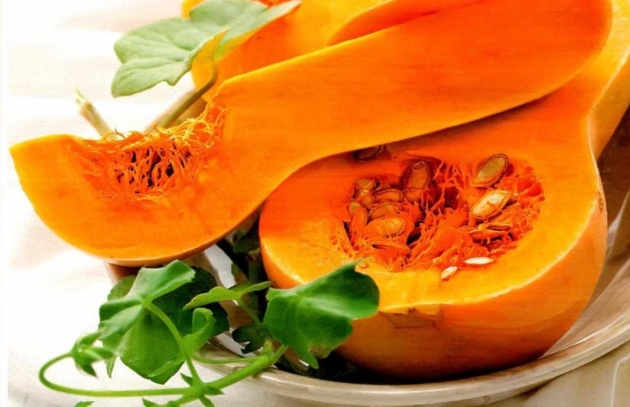
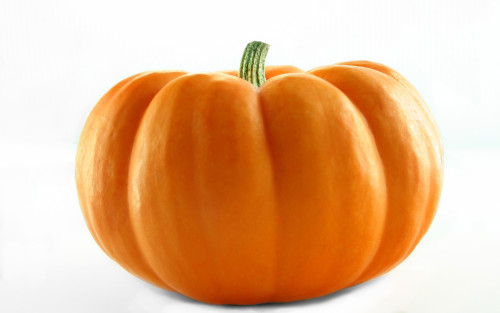
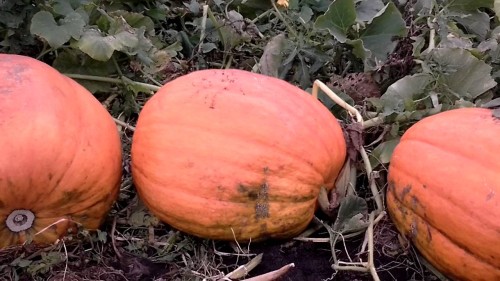
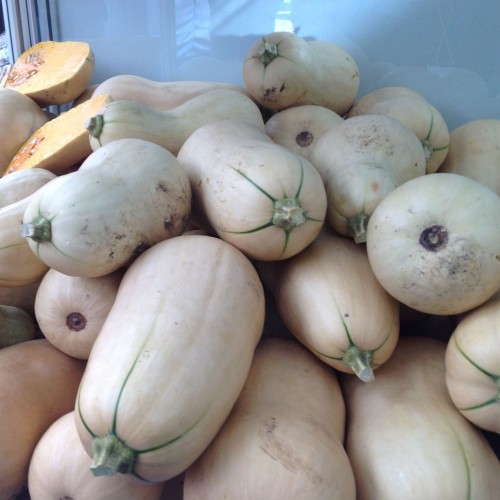
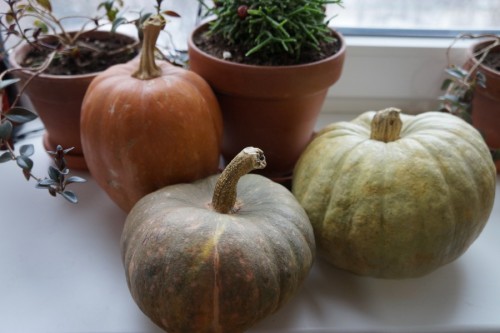
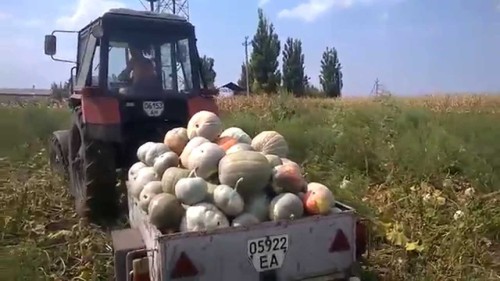
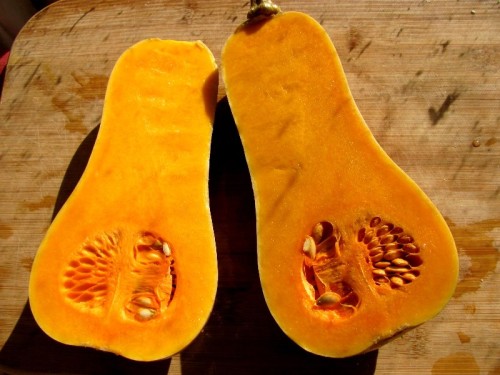
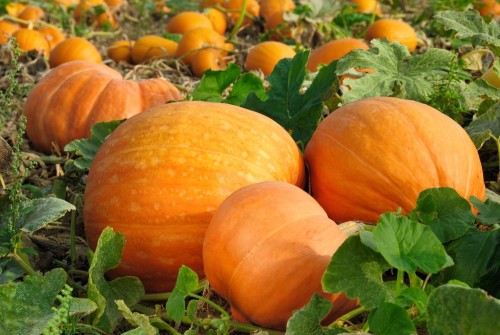
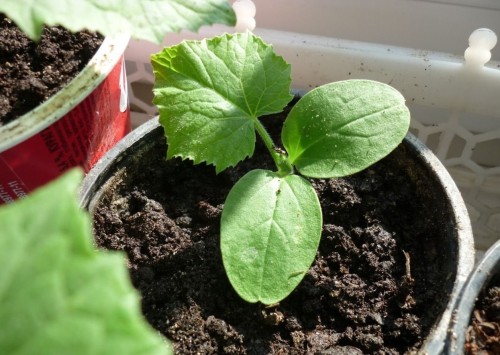
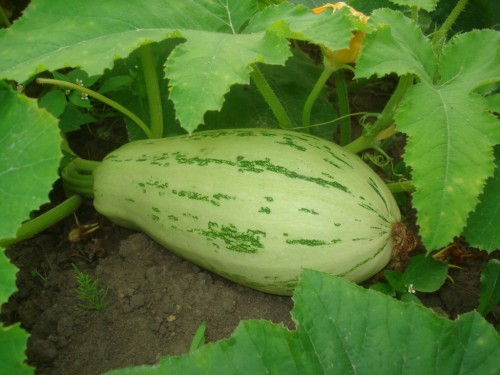
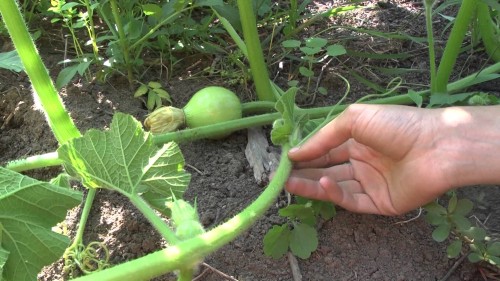
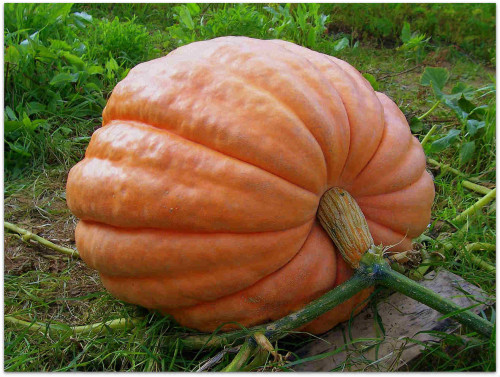
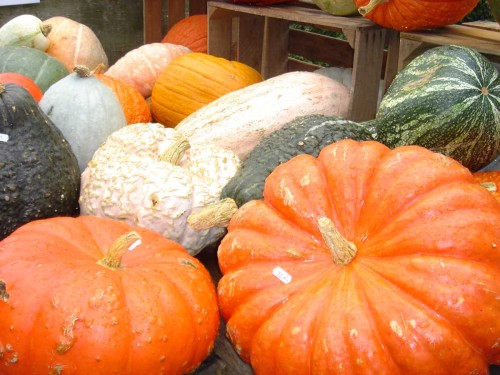












 Start a discussion ...
Start a discussion ...